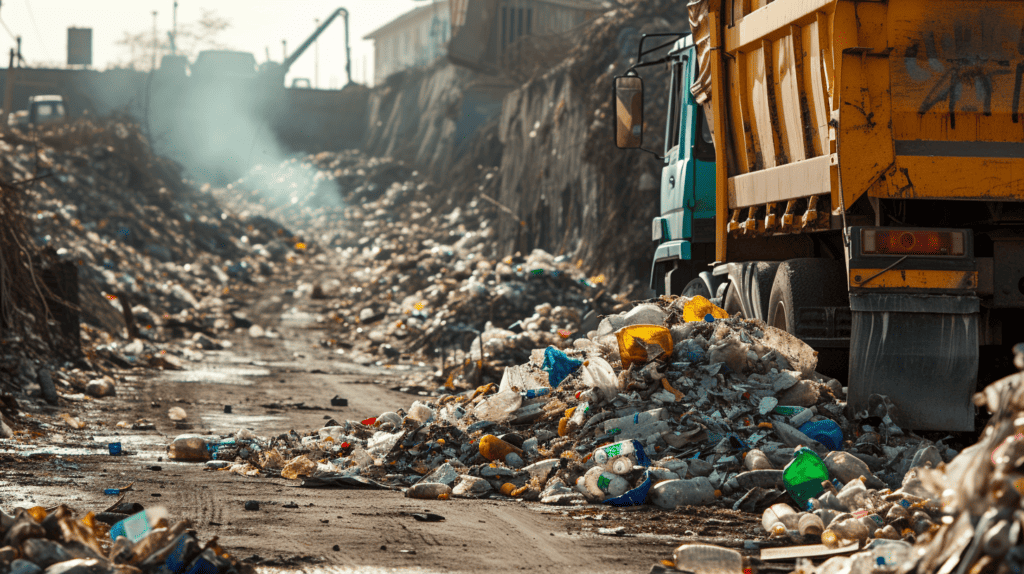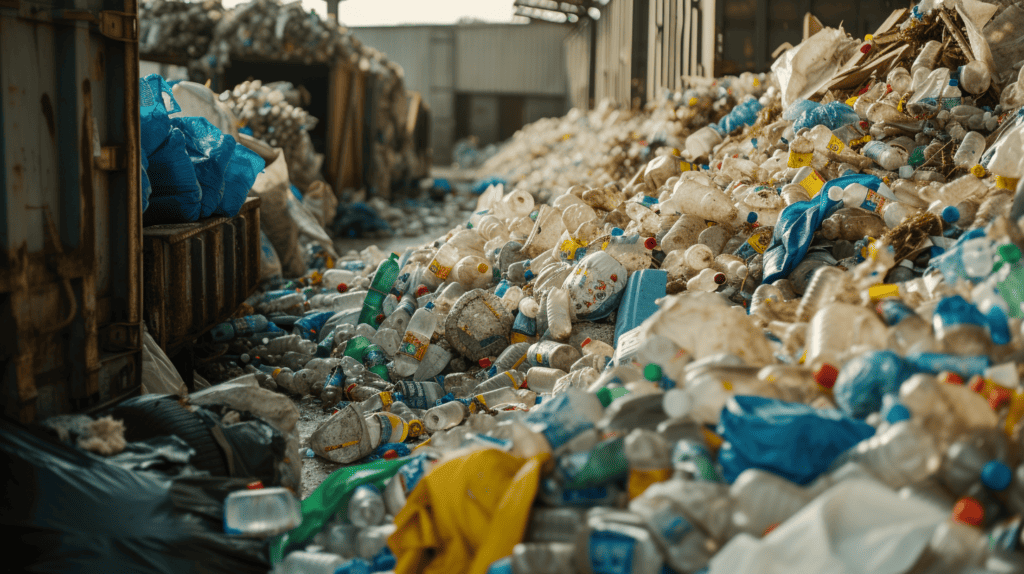To stay competitive in today’s market, businesses must consider their environmental impact as part of their overall business strategy. Implementing eco-friendly actions such as adopting a green office mindset and engaging in effective waste management practices can greatly contribute to a more sustainable future.
As the focus on environmental issues grows, it becomes increasingly important for companies to assess their carbon footprint and reduce their environmental impact through deliberate, targeted actions. To help businesses navigate this journey, here are 21 tips that promote sustainability and Corporate Social Responsibility (CSR) in the workplace.
Key Takeaways
- Create a green office by adopting sustainable workplace ideas and focusing on waste reduction.
- Implement eco-friendly actions to reduce environmental impact and promote CSR.
- Focus on zero-waste initiatives and recycling to improve waste management practices.
- Embrace technology that supports sustainability and environmental stewardship.
- Consider the environmental consequences of business decisions for long-term sustainability.
21 Tips for Business Sustainability Through Waste Management
Step 1: Conduct a Waste Audit
Conduct a waste audit to understand how much and what types of waste your business generates. This will help you identify opportunities for waste reduction and set goals.
Step 2: Reduce Paper Use
Go paperless where possible to reduce paper waste. Provide incentives for employees to only print what they need. This can reduce paper purchasing costs by 30-50%.
Step 3: Use Reusable Options
Find reusable alternatives for disposable items used in your business. Reusable dishware, utensils, and cups can reduce waste by 50-90% .
Step 4: Donate Usable Items
Donate old but usable office furniture, electronics, and supplies to nonprofit organizations rather than throwing them away. Over 2 million tons of electronics are discarded annually5.
Step 5: Recycle Properly
Set up clearly labeled recycling bins and educate staff on what can and cannot be recycled to avoid contamination1. Proper recycling can divert up to 75% of waste from landfills.
Step 6: Compost Organic Waste
Compost food scraps and yard trimmings to reduce organic waste, which comprises over 30% of landfill waste. Composting can divert up to 50% of waste.
Step 7: Rethink Shipping Materials
Rethink shipping box and packing material usage. Reuse materials when possible or use biodegradable options like cornstarch packing peanuts. Packing materials make up 30% of business waste.
Step 8: Practice Lean Manufacturing
Minimize waste in manufacturing through strategies like lean manufacturing that eliminate non-value-added activities. Lean manufacturing can reduce process waste by 50%.
Step 9: Redesign Products
Redesign products to use less material, have reusable parts, or be take-back/recyclable at the end of life to reduce waste3. Product redesign can achieve 20-50% waste reductions.
Step 10: Engage Employees
Encourage employee participation through contests, training, and incentives for sustainability ideas. This can reduce waste up to 20%.
Step 11: Purchase Used Equipment
Consider purchasing refurbished electronics, furniture, and other equipment to reduce demand for new products. The used goods market reduces waste by 2.5 million tons per year.
Step 12: Choose Sustainable Suppliers
Prioritize suppliers with sustainable practices like take-back programs and reduced packaging to cut purchasing waste. This encourages better supplier practices.
Step 13: Offer Sustainable Products/Services
Offer sustainable products or services that are reusable, recyclable, made from recycled content, non-toxic, or that displace disposables. This meets growing customer demand.
Step 14: Measure and Track Waste
Continuously measure waste streams and reduction program results against goals. This ensures programs stay on track. Tracking can boost recycling rates by 30%.
Step 15: Educate Customers on Sustainability
Educate customers on sustainability through messaging on invoices, your website, and social media. Customers increasingly support sustainable companies with their wallets.
Step 16: Join Recycling Programs
Join industry recycling programs for items like printer cartridges, electronics, lightbulbs, and packaging to recycle properly. Recycling programs divert over 850,000 tons of e-waste annually.
Step 17: Consider Waste-to-Energy
Explore waste-to-energy options if available in your area, which convert waste into usable heat, electricity, or fuel through combustion, pyrolysis, gasification or anaerobic digestion.
Step 18: Improve Logistics Efficiency
Streamline logistics like delivery routes and load planning to reduce transportation miles and fuel waste. Improving logistics efficiency can reduce associated waste by 10-30% .
Step 19: Offset Unavoidable Emissions
If some waste or emissions are unavoidable, offset them by purchasing carbon credits or investing in renewable energy. Offsetting demonstrates awareness of sustainability impacts.
Step 20: Get Sustainability Certified
Get certified to sustainability standards like ISO 14001 or B Corp to verify your commitment. Certification can boost customer perception of your brand. Over 350 B Corps have achieved net zero waste.
Step 21: Continuously Improve Over Time
Regularly review your waste reduction program results and find new ways to reduce impacts. Small steps over time lead to major progress and savings.
Embracing Technology for Environmental Impact Reduction
As efforts to minimize the harmful impact on our environment gain momentum, technology plays a crucial role in reducing energy consumption and carbon footprint. By implementing smart energy-saving devices, transitioning to a digital workplace, and cultivating a paperless office culture, businesses can become more sustainable and environmentally responsible.
Implementing Smart Energy-Saving Devices
Integrating sensor devices, smart plugs, and automated systems into an office environment can significantly reduce energy usage. These devices enable precise control over lighting, heating, and cooling systems, resulting in reduced energy consumption and a smaller carbon footprint. In addition, sustainability measurement tools can help analyze economic, social, and environmental KPIs, providing insights to optimize office spaces for increased energy efficiency further.
Transitioning to a Digital Workplace
Digitalization helps diminish paper waste while supporting remote work, decreasing commuting pollution. By embracing digital collaboration tools and online security measures, teams can work more efficiently and contribute to environmental stewardship. Furthermore, employers can promote digital solutions, such as interactive flipbook makers, to create engaging presentations or reports, without relying on printed materials.
Cultivating a Paperless Office Culture
Reducing paper consumption not only saves trees but also decreases waste generation. Encourage employees to adopt digital tools and software, such as cloud storage and note-taking apps, to minimize reliance on traditional paper. In cases where paper is necessary, consider using erasable stone paper notebooks, which offer a sustainable alternative to regular paper products, reducing paper waste and contributing to a greener office environment.
Maximizing Energy Efficiency in Electronics
Electronic devices constitute a significant portion of office energy consumption. Simple measures, such as enabling dark mode on screens, reducing screen brightness, or engaging energy-saving settings, can contribute to significant energy savings. Furthermore, syncing devices with sensor devices and smart plugs can help conserve energy when devices are not in use, ensuring mission-driven businesses operate more sustainably.
Creating an Eco-Friendly Workspace
Creating a green office involves a conscious effort to adopt sustainable practices and use eco-friendly products. It includes choices from office cleaning supplies to kitchen equipment and even bathroom fixtures. In this section, we’ll focus on:
- Zero-waste kitchens
- Eco-friendly cleaning
- Sustainable bathroom facilities
Encouraging efforts like these in a business can result in a workspace that’s not only environmentally friendly but also promotes well-being for employees.
Zero-Waste Kitchen: Start by implementing a zero-waste kitchen in your office. Replace single-use coffee pods with reusable coffee pods and opt for loose tea instead of individually packaged teabags. Additionally, provide reusable cups, plates, and utensils to discourage the use of disposable items. Encourage employees to bring lunch in reusable containers and support local and organic food in the workplace.
Eco-Friendly Cleaning: Shift your office cleaning practices towards green cleaning. Replace harmful cleaning products with eco-friendly certified alternatives that come with eco-friendly certifications and labels. Utilize non-disposable cleaning supplies such as microfiber cloths and washable mop heads to minimize waste. Educate employees on the importance of using these environmentally friendly cleaning alternatives to maintain a healthy working environment.
| Area | Eco-Friendly Product |
|---|---|
| Kitchen | Reusable coffee pods |
| Kitchen | Loose tea |
| Cleaning | Green cleaning products |
| Cleaning | Non-disposable cleaning supplies |
Sustainable Bathroom Facilities: Optimize your office bathrooms to promote eco-friendliness. Switch from paper towels to hand air dryers, which reduce paper waste and decrease energy consumption. Install water-efficient faucets and toilets that minimize water usage. Lastly, consider using sensor-based energy-saving lighting, which turns off automatically when the room is unoccupied, conserving energy and reducing utility expenses.
By adopting these strategies, you can create a green and sustainable workspace that promotes employee well-being and supports long-term environmental stewardship.
Advancing Waste Reduction Practices

Eco-friendly businesses prioritize effective waste reduction strategies to lessen their environmental impact while promoting a sustainable future. By implementing waste prevention, sustainable procurement, and responsible recycling programs, these businesses contribute to a circular economy. In this section, we will explore key practices that have the potential to change traditional waste habits and build a greener world.
Advocating for the 3Rs: Reduce, Reuse, Recycle
The 3Rs concept—reduce, reuse, recycle—lays the foundation for waste reduction in ecological businesses. By minimizing disposable material use, reusing tech devices, and recycling energy, businesses can adopt a zero waste approach to their operations. Composting and food banks are also effective ways to manage waste in a responsible manner, reducing portion sizes and practicing attentive waste management can lead to even greater waste reduction.
Adopting Sustainable Procurement Policies
One vital aspect of waste reduction is developing a sustainable procurement policy. This involves choosing products with minimal packaging, prioritizing reusable and recyclable items, and limiting vendor promotional materials. Adopting a sustainable procurement policy not only helps to reduce waste but also contributes to sustainable event planning and long-term company growth.
Engaging in Responsible Recycling Programs
Participating in recycling programs is an essential component of waste reduction. By recycling, businesses can contribute to the recovery of valuable resources, generate sustainable products, and save landfill space. These programs also offer companies an opportunity to assess their waste streams and discover new areas for improvement.
Reducing Plastic Use with Innovative Alternatives
Plastic pollution remains a significant global issue, but businesses can help combat this by seeking out plastic alternatives to reduce their plastic footprint. By using compostable products and adopting other innovative solutions, a company can contribute to a more sustainable future and highlight their commitment to environmental responsibility.
Waste Management in Eco-Friendly Businesses

Implementing eco-friendly waste management solutions plays a crucial role in achieving environmental sustainability. By carefully evaluating resource usage, partnering with responsible waste disposal services, and tracking waste management KPIs, eco-friendly businesses can uphold their environmental responsibilities and minimize their ecological impact.
Incorporating Eco-Friendly Waste Management Solutions
Adopting sustainable waste management practices and engaging in waste reduction strategies are key aspects of an eco-conscious business mindset. Some effective waste management solutions include source reduction, recycling, and composting. Transitioning to reusable or biodegradable materials and encouraging employees to rethink their resource usage contributes significantly to resource conservation.
Optimizing Resource Usage for Minimal Waste
Eco-friendly businesses should identify potential areas of waste production and implement tactics to minimize waste generation. A combination of careful planning, resource usage optimization, and staff awareness helps to achieve this goal. Green procurement policies, eco-conscious event planning, and proper waste segregation further support waste reduction efforts.
Partnering with Responsible Waste Disposal Services
Establishing partnerships with responsible waste disposal services is essential to ensure proper treatment of different waste types. Disposal services that prioritize environmental sustainability and adhere to local regulations are ideal allies for eco-friendly businesses. Engaging with such services not only demonstrates a commitment to the environment but also significantly reduces the company’s ecological impact.
Tracking and Analyzing Waste Management KPIs
Monitoring waste management KPIs is crucial for ensuring the effectiveness of your waste reduction strategies. These KPIs may include the amount of waste generated, the percentage of recycled material, and cost savings due to waste management innovations. Employing sustainability tools to track, analyze, and refine waste management practices can lead to further improvements and solidify a business’s commitment to lasting environmental sustainability.
Conclusion on Waste Management in Eco-friendly Businesses
In our quest for long-term sustainability and environmental stewardship, eco-friendly businesses can make enormous strides by implementing sustainable practices in waste management. By focusing on minimizing waste, reusing resources, and recycling materials, companies do more than just help the environment—they also align with the values and priorities of their employees and customers.
Adopting innovative green business strategies, including the use of cutting-edge technology, creating eco-friendly workspaces, and committing to responsible waste management, allows businesses to reap numerous environmental benefits. With sustainability goals met, companies can also experience improved brand image and reputation—contributing significantly to the organization’s success.
Ultimately, the collective efforts of eco-friendly businesses make a genuine impact on the Earth and our overall environmental consciousness. On an individual level, we have the opportunity—and social responsibility—to make mindful decisions, reduce our ecological footprint, and support companies that make sustainability a top priority. Together, we can forge a brighter, more sustainable future.
FAQ on Management Practices for Zero Waste
Q: What is the importance of waste management in sustainable businesses?
A: Waste management in sustainable businesses is crucial for reducing the environmental impact, achieving sustainability goals, and demonstrating a commitment to environmental responsibility.
Q: How can businesses reduce the amount of waste they produce?
A: Businesses can reduce waste production by implementing practices such as recycling, composting, and utilizing sustainable packaging materials.
Q: What are the environmental benefits of sustainable waste management practices?
A: Sustainable waste management practices help in reducing pollution, conserving natural resources, and minimizing the carbon footprint of businesses.
Q: What is a waste audit, and why is it important for businesses?
A: A waste audit is a systematic process of assessing a company’s waste generation, disposal methods, and identifying opportunities for waste reduction. It is essential for businesses to understand their waste generation patterns and areas for improvement.
Q: How does proper waste management contribute to achieving zero waste goals?
A: Proper waste management involves implementing strategies to minimize waste, increase recycling rates, and promote a circular economy, which are essential steps towards achieving zero waste goals.
Q: What are some sustainable waste management practices that businesses can adopt?
A: Businesses can adopt sustainable waste management practices such as waste minimization, source separation for recycling, energy recovery from waste, and promoting a culture of waste reduction among employees.
Q: What are the key considerations for hazardous waste disposal in eco-friendly businesses?
A: Eco-friendly businesses should adhere to strict regulations for hazardous waste disposal, ensure proper labeling and storage, and consider alternative methods such as treatment or recycling for hazardous waste management.
Q: How can businesses incorporate waste management into their sustainability strategy?
A: Businesses can incorporate waste management into their sustainability strategy by setting waste reduction targets, implementing green procurement practices, and regularly monitoring waste generation and diversion efforts.
Q: What are the potential challenges in implementing effective waste management and recycling programs in businesses?
A: Challenges may include initial investment in infrastructure, employee training, changing consumer behavior, and finding suitable waste management partners for recycling and disposal.
Q: How can businesses leverage waste management as a means to make their operations more sustainable?
A: Businesses can make their operations more sustainable by designing efficient waste management systems, promoting a circular economy approach, and actively engaging with stakeholders to prioritize waste reduction and recycling activities.





Leave a Reply